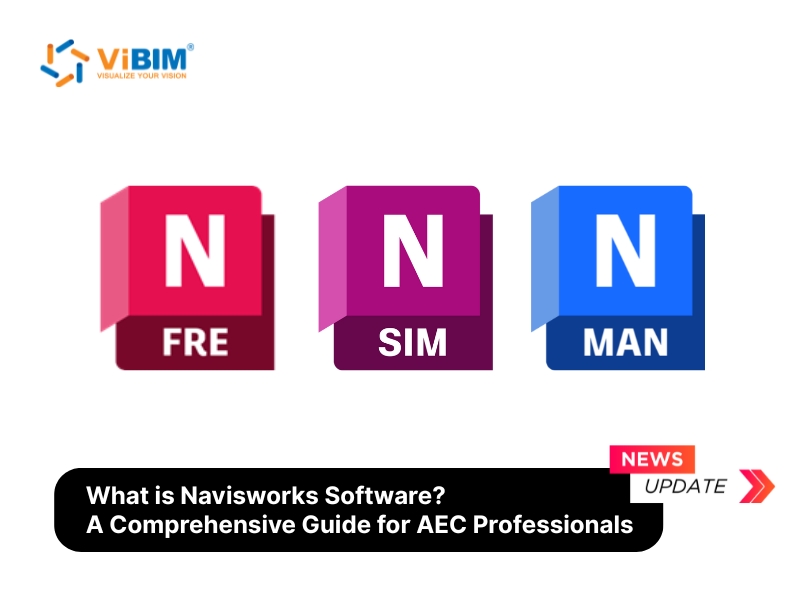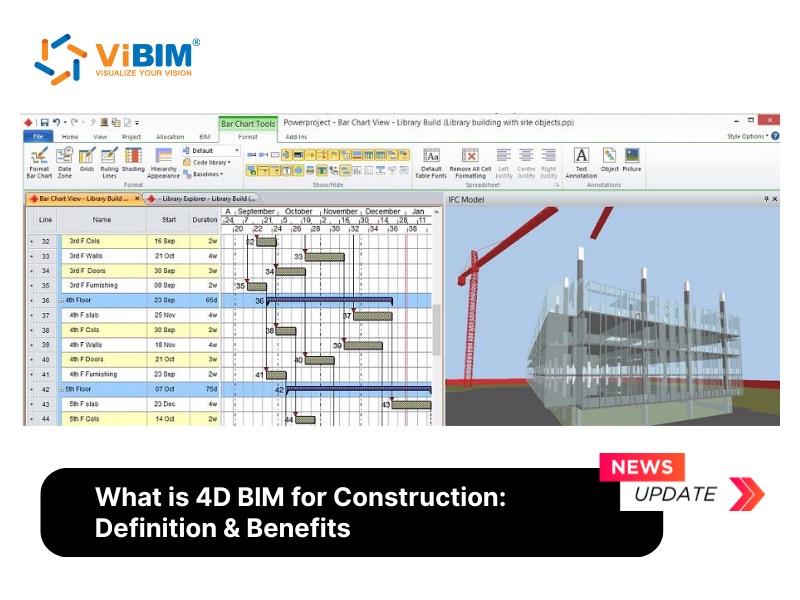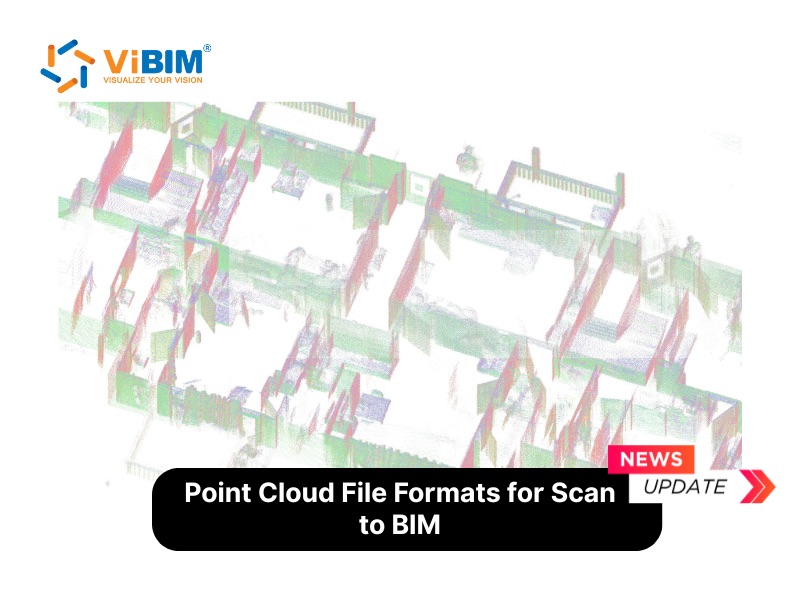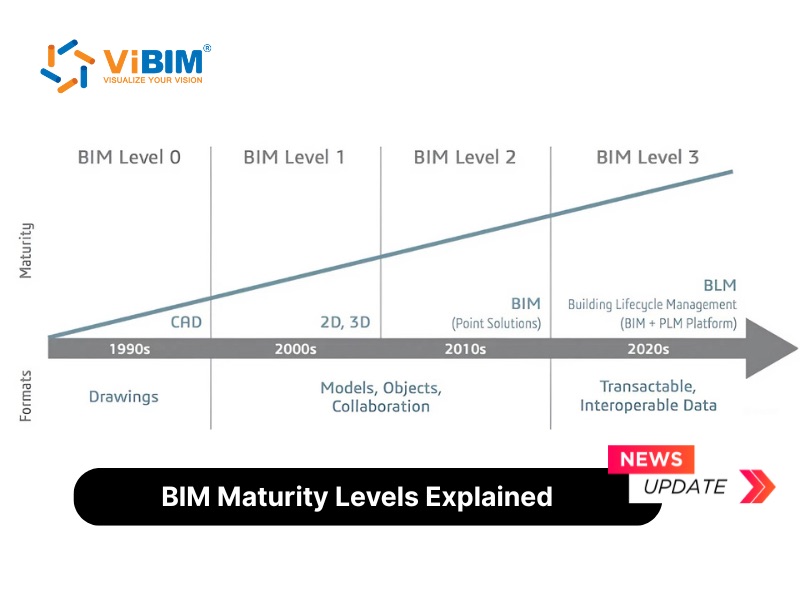The post-construction phase of a building lifecycle often presents significant challenges in terms of efficient facility management. Owners and operators grapple with keeping the building running well, handling its assets, and keeping operational expenses down. Fortunately, Building Information Modeling (BIM), which isn’t just for design and construction, offers significant advantages for facility management. This guide from ViBIM explains the basics of how BIM can be a powerful tool for improving building operation and upkeep.

What is BIM for facility management?
BIM for Facility Management involves extending the use of Building Information Modeling data and processes into the operational phase of a building’s life cycle, well after construction is complete. At its core, BIM creates a rich, digital representation of a building’s physical and functional characteristics – encompassing everything from structural elements to MEP systems and individual pieces of equipment. When applied to facility management, this digital model transforms into a dynamic, centralized database. It becomes an invaluable tool for the ongoing management, maintenance, and optimization of the facility, ensuring assets like equipment, spaces, and furnishings are efficiently overseen throughout their service life, supporting crucial activities from maintenance scheduling to renovation planning.
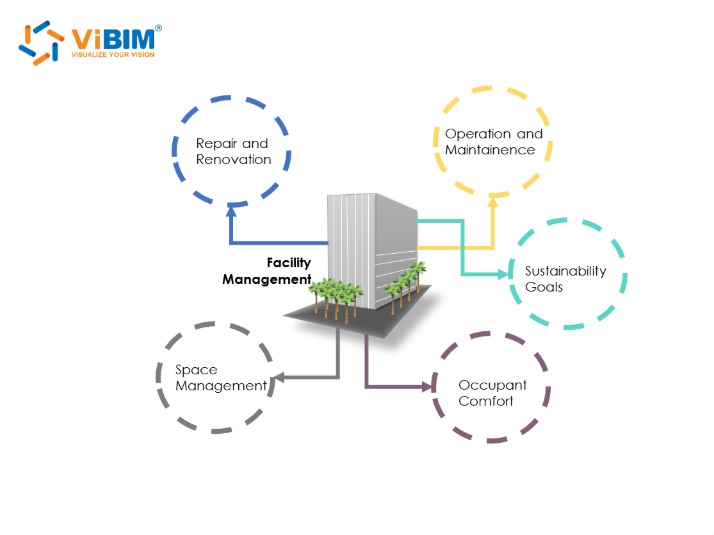
How to use BIM for facility management?
Implementing BIM for facility management is a strategic process that ideally begins long before the building handover. It involves careful planning and data integration during the design and construction phases to ensure the FM team receives the information they need in a usable format. Here’s a basic step-by-step approach:
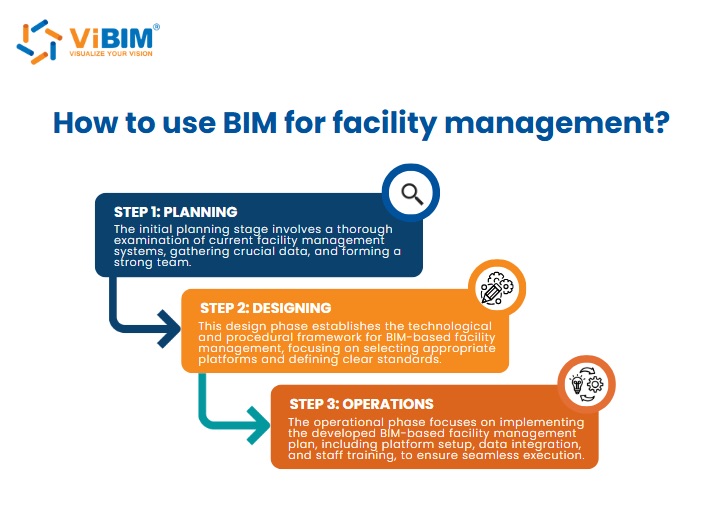
Step 1: Planning
This initial phase is crucial for laying the groundwork and defining the specific requirements for using BIM in facility operations. Success here ensures the subsequent steps are aligned with the actual needs of the FM team. In this step includes:
- Define FM Goals & Requirements: Clearly articulate what you aim to achieve with BIM in operations. Will it be used for faster maintenance responses, better space allocation, or tracking asset warranties? Identify the specific problems BIM needs to solve.
- Identify Necessary Data: Determine precisely what information the FM team needs for each building asset (e.g., equipment manufacturer, installation date, warranty period, maintenance schedule, performance data). Avoid collecting unnecessary data (data overload).
- Establish Data Handover Protocols: Define how and when the BIM data, including FM-specific information, will be transferred from the design and construction teams to the operations team. Specify formats (like COBie) and responsibilities within project documents (e.g., Employer’s Information Requirements – EIR).
- Select FM Software & Platforms: Choose the software tools the FM team will use to access and interact with the BIM data. Consider integration capabilities with existing Computerized Maintenance Management Systems (CMMS) or Integrated Workplace Management Systems (IWMS).
Step 2: Designing (Data Integration)
With the planning complete, this phase focuses on embedding the necessary facility management information directly into the BIM model during the design and construction stages. In this step includes:
- Integrate FM Needs into BIM Execution Plan (BEP): Ensure the data requirements identified in the planning phase are incorporated into the project’s BEP, guiding model authors on what information to include for key assets.
- Embed Data During Design & Construction: As the BIM model is developed, embed the required FM data directly into the corresponding model elements (e.g., linking warranty documents or maintenance manuals to specific equipment).
- Ensure Data Quality and Accuracy: Implement checks and validation processes throughout the design and construction phases to ensure the embedded FM data is accurate, complete, and consistently formatted according to the agreed protocols.
- Develop the As-Built BIM Model: Crucially, update the BIM model to reflect the final, as-built conditions of the facility upon construction completion. This accurate As-Built model, enriched with FM data, is what gets handed over.
Step 3: Operations
Once the building is handed over with the data-rich As-Built BIM model, this phase involves the practical application of BIM by the facility management team for day-to-day tasks and long-term strategic management. In this step includes:
- Access and Visualize Data: Utilize the As-Built BIM model as a central information hub. FM teams can easily navigate the virtual building, locate assets (like pumps, air handling units, or fire extinguishers), and instantly access linked data.
- Streamline Maintenance Management: Integrate the BIM model with CMMS. Clicking on an asset in the model can automatically generate work orders, display maintenance history, and access relevant manuals, streamlining both preventative and corrective maintenance.
- Optimize Space Management: Use the accurate spatial information within the BIM model for efficient space planning, tracking occupancy, managing departmental moves, and planning renovations or refurbishments.
- Enhance Asset Lifecycle Management: Leverage the integrated data to track asset performance, manage warranties, predict potential failures, and make informed decisions about repairs or replacements throughout the building’s lifecycle.
- Support Emergency Preparedness: Use the model to quickly locate safety equipment, shut-off valves, and plan evacuation routes, improving response times during emergencies.
Challenges in Using BIM for Facility Management
Despite its significant benefits, implementing BIM for facility management involves several obstacles that organizations must address to achieve successful integration and maximize return on investment. Here are 12 common challenges:
- Difficulties in ensuring data accuracy and consistency when transferring information from the construction phase to operational use.
- Opposition within the organization to altering established facility management procedures.
- Scarcity of professionals who possess knowledge in both BIM methodologies and facility management practices.
- Complexities involved in integrating BIM software with existing facility management systems.
- Issues related to handling large BIM model file sizes to allow easy access for maintenance staff.
- The ongoing task of maintaining the BIM model’s accuracy after any modifications to the building or changes in its equipment.
- The challenge of defining the appropriate Level of Detail (LOD) necessary for operational needs without making the model overly complex.
- Uncertainty regarding who is responsible for and owns the processes of model maintenance and updates.
- The need to demonstrate the financial benefits of BIM implementation costs in relation to long-term operational cost reductions.
- Difficulties in achieving standardization across multiple buildings that have varying qualities of existing documentation.
- Security risks associated with incorporating building systems data into the BIM environment.
- The costs associated with software licenses for numerous users across the organization.
See more: 9 Major Advantages of Using BIM for Facility Management
FAQs
Which BIM standard is used for facility management?
For facility management, the main BIM standard is the COBie (Construction Operations Building Information Exchange) standard. This standard offers a defined structure for the exchange of critical operational data pertaining to buildings, thereby simplifying access and utilization of BIM information for facility managers
What are the benefits of BIM for facility owners and operators?
BIM offers facility owners and operators significant benefits, including improved asset management, streamlined maintenance, enhanced space use, reduced energy consumption, and better collaboration. Ultimately leading to cost savings and increased building efficiency.
Implementing BIM for facility management revolutionizes building operations despite initial challenges of cost, data management, and training. By following the three-step process outlined, organizations can achieve streamlined maintenance, improved asset management, and enhanced collaboration. When properly implemented, BIM becomes a strategic approach that maximizes building performance, reduces costs, and extends asset lifespan—ultimately delivering greater value to all stakeholders throughout the building’s lifecycle.
At ViBIM, we delivers precise BIM modeling for facility management. Our services transform complex building information into actionable intelligence, enabling efficient facility operations through accurate digital representations. Contact ViBIM today for your project!






